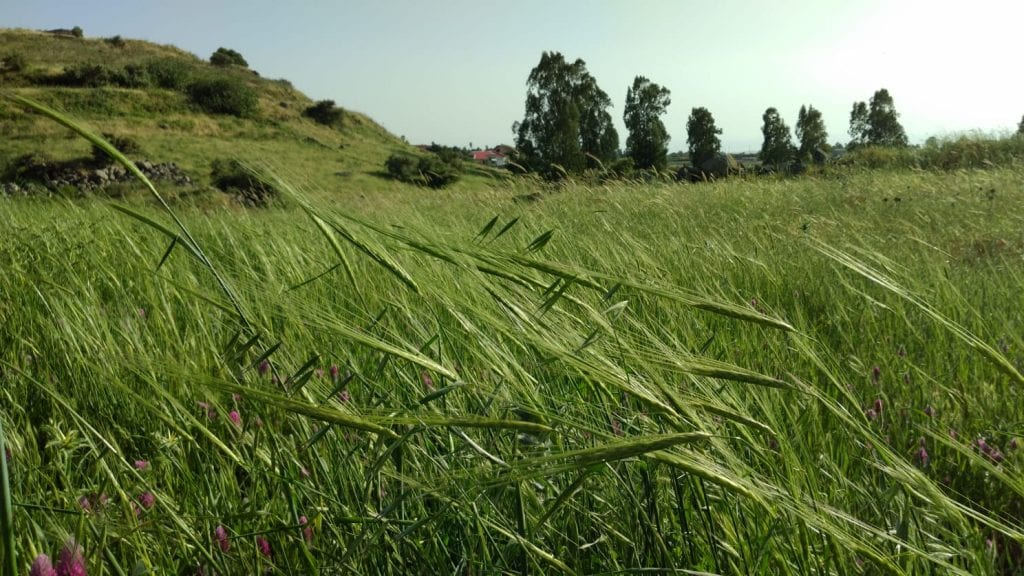A recent find in the Carmel mountains by an international team of archaeologists indicates that before grains were cultivated for food, they were grown for fermented alcoholic beverages.
A Stanford University-led study of three 13,000-year-old stone mortars discovered near a graveyard site called the Raqefet Cave, in the Carmel Mountains near Haifa, identified ancient beer residue that is believed to be between 11,700 to 13,700 years old. The mortars are attributed to Natufians, a semi-nomadic group of people who lived in the Levant between the Paleolithic and Neolithic periods.
According to team leader Li Liu, the Sir Robert Ho Tung Professor in Chinese Archaeology at Stanford’s School of Humanities and Sciences, “This accounts for the oldest record of man-made alcohol in the world.”
At the same site, archaeologists found proof of bread baking which dates back some 11,600-14,600 years, meaning that using grains for brewing predates the agricultural revolution that brought farming to the region by at least 4,000 years.
“It has long been speculated that the thirst for beer may have been the stimulus behind cereal domestication, which led to a major social-technological change in human history; but this hypothesis has been highly controversial,” the Stanford authors say. “We report here of the earliest archaeological evidence for cereal-based beer brewing by a semi-sedentary, foraging people.”

Laboratory analysis of the residue and other archaeological evidence found in the cave indicate, that the beer was made from from seven types of plants including wheat or barley, oat, legumes and bast fibers including flax.
“They packed plant-foods, including malted wheat/barley, in fiber-made containers and stored them in boulder mortars. They used bedrock mortars for pounding and cooking plant-foods, including brewing wheat/barley-based beer likely served in ritual feasts 13,000 years ago,” the scientists wrote in the Stanford News.
The team postulated that the Natufian brewery used a three-stage process: malt production from the starch of wheat or barley through grain germination, mashing of the malted grain, and finally, fermentation through the aid of wild yeast.
Liu hypothesized that the beer production was of a religious nature because its production was found near a graveyard.
“This discovery indicates that making alcohol was not necessarily a result of agricultural surplus production, but it was developed for ritual purposes and spiritual needs, at least to some extent, prior to agriculture,” she said.
“Beer making was an integral part of rituals and feasting, a social regulatory mechanism in hierarchical societies,” said Jiajing Wang, a doctoral student at Stanford’s Department of East Asian Languages and Cultures and a co-author of the study.
Last year, the researchers brewed their own version in a class at Stanford, based on extensive research on the brewing techniques of early human civilizations. According to the researchers, the beer was entirely unlike what we call beer today. “It’s more like a thin oatmeal,” Wang said.
The recent discovery is not the only evidence that beer was present in the region in ancient times. In 2015, archaeologists discovered a 5,000-year-old beer vessel in a dig in downtown Tel Aviv.
The recent discovery confirms that the beverage has deep roots in Israel. Nonetheless, brewing of the type initiated by Natufians thousands of years ago became almost non-existent when the Arab Muslim Empire conquered the region in the 7th Century. Yechiel Luterman, a Canadian immigrant to the Golan, wants to change that. Luterman is in the process of opening a distillery in his new home named Edre’i.
“Whiskey is basically distilled beer,” Luterman told Breaking Israel News. “One of the most significant aspects of brewing is the malting of the barley. When I went to set up my brewery, I was shocked to discover that there is no barley grown for malting in Israel. All of the beer and whiskey is made using malted barley that is imported from overseas.”
Though beer is not mentioned in the Bible, barley was the central aspect of the Omer offering brought after Passover and was also one of the seven species that brought a special blessing to the land of Israel.
For Hashem your God is bringing you into a good land, a land with streams and springs and fountains issuing from plain and hill; a land of wheat and barley, of vines, figs, and pomegranates, a land of olive trees and honey. Deuteronomy 8:7-8
Luterman is beginning to malt barley, just as the Natufians did thousands of years ago.
“Unlike other grains, the overwhelming majority of barley is grown specifically for malting,” Luterman said. “I am malting my own barley that is grown here because I want to have my whiskey be truly a product of the land of Israel. Malting barley clearly has ancient roots here and I want to revive it.”
Luterman’s initiative also has practical benefits.
“In-house malting from locally grown barley is a new trend in brewing around the world,” Luterman explained. “It makes the best product.”



